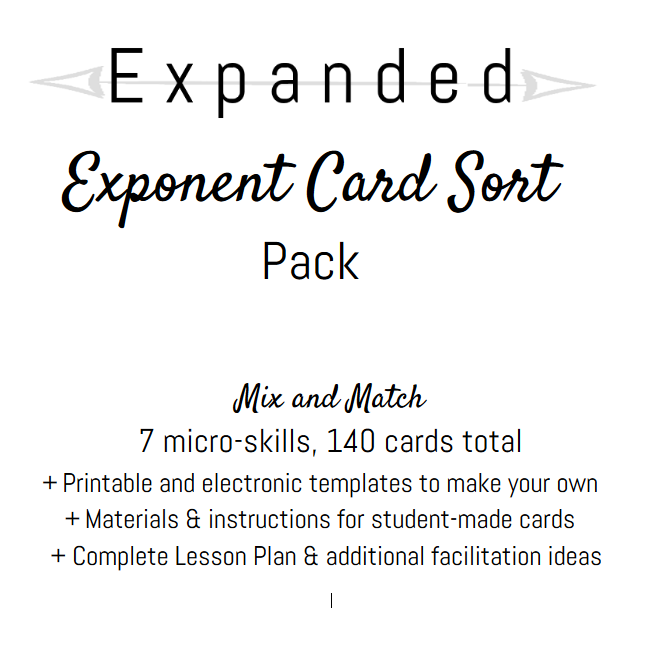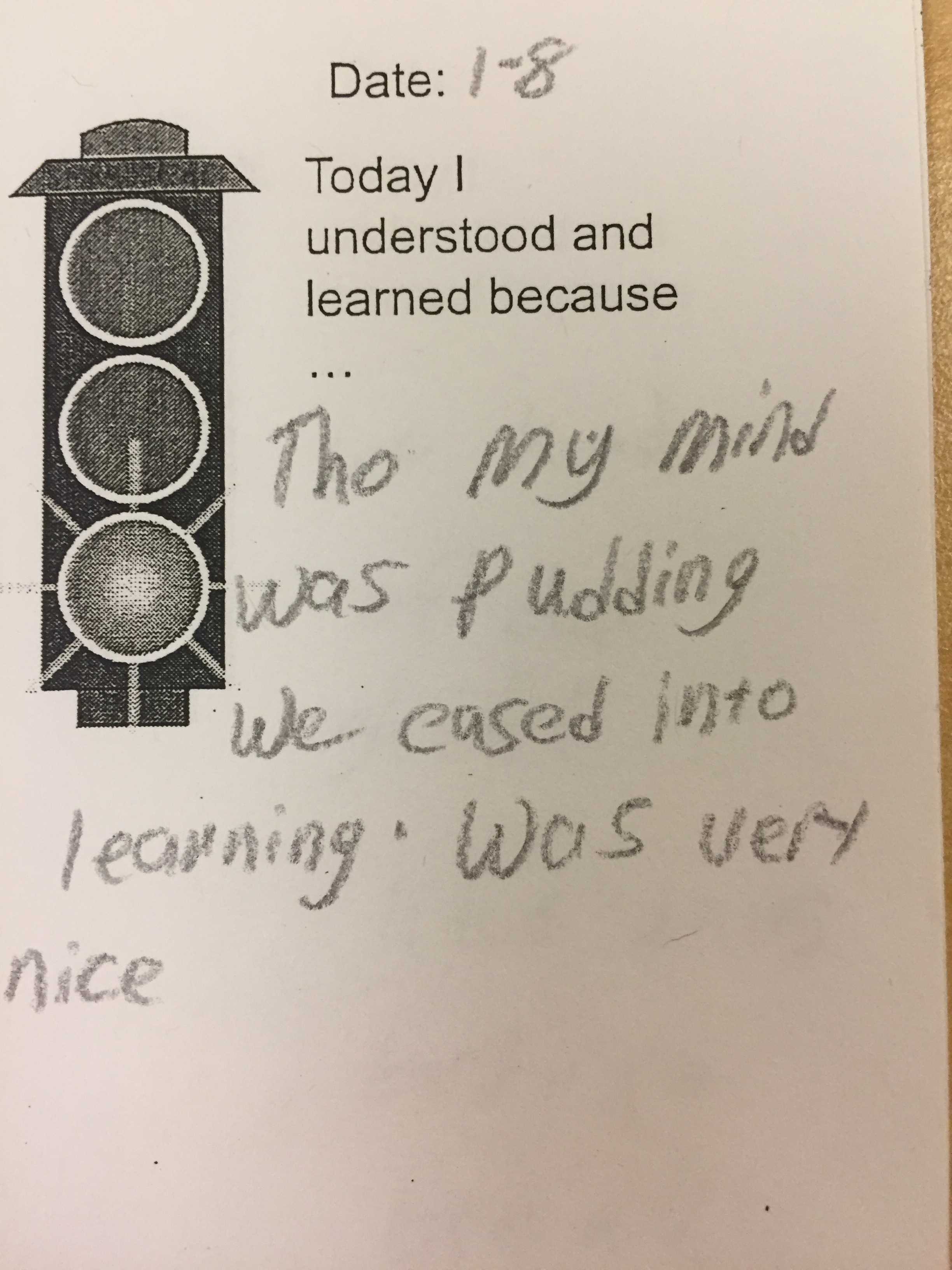I’m a goals kind of person. I like them, find them helpful, function best when I’m clear on them. (Classic upholder, for any other Gretchen Rubin fans) So, the document that organizes all of my teaching is topped by a bullet pointed list of goals.
(Best goal ever: “Actually use sick time” That was actually helpful)
This fall, one says “incorporate student-written math tasks/problems/questions”
It’s an attempt to share agency, to give a confidence boost (you, yes, you, can write a math problem…), to switch up the formats (no worksheets!), to have open ended tasks.
So, this month I’ve tried two formats, with three topics, in two different classes. (Because, upholder with goals)
Version 1: Passing Problems
The order of operations:
Introduce a model, a template, a pattern, a way to isolate a particular skill. (For us, expressions like 5+3×2 and (5+3)x2 that are different only in their parentheses)
Students write similar problems on index cards.
Check and double check the cards, write answers on the back.
Collect, shuffle, redistribute cards
Do the problem, without writing the card. (Repeat, and repeat, and repeat this instruction. The impulse to write on the cards instead of the scrap paper is strong)
Check the answer
Pass the card to the right, receive a new card.
Repeat.
Version 2: Card Sort
The order of operations:
Introduce new material
Small groups complete pre-existing card sort
(This so far, is a classic mathacognitive lesson. I have a bin full of card-sort-like activities )
Students write their own pairs of cards to be sorted.
Once checked, the new cards are scrambled and displayed with our doc cam
The class repeats the process of reuniting the pairs with their own newly-written cards. (For my class, students are just writing on notebook paper which goes with which, you could have a whole class activity of physically moving and matching the pairs, or make copies for everyone to cut out and arrange)
Particularly with the passing problems, there was a fair amount of incredulous staring, with verbal and non-verbal versions of ‘you want me to write the problem?!?’
But, incredulity/confusion aside, everyone eventually wrote their own problems and solved some of their classmates’, so I’m declaring it a victory and looking for the next spot to have them write the problems.
Bonus: It inspired me to upgrade from my previous, handwritten, kind-of-rushed, oops-there’s-an-error cards to a new actually-typed-and-formatted set of my exponent card sort.
Further Bonus: I was on a roll, so I typed up my cards, then kept going until I had a whole pack of different exponent cards and instructions and templates and a lesson plan for student-written cards. They’re available on TeachersPayTeachers if you’re interested)






